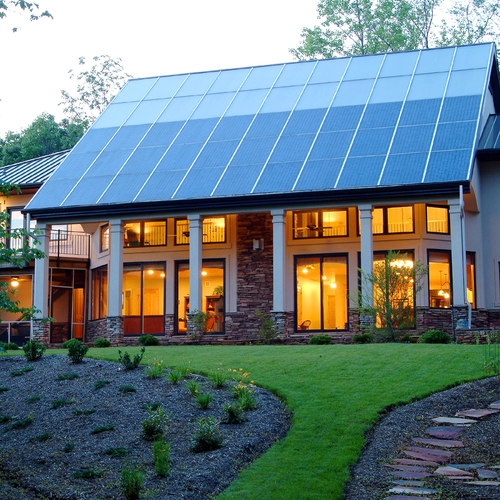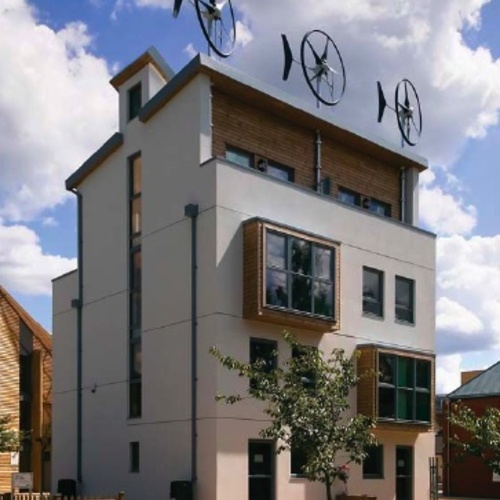
Image Credit: Stewart Milne Group
Stewart Milne Group says tests of its Sigma Home prototype show that the building’s wind turbine and PV systems aren’t compensating for its underperforming shell
In 2007, when U.K. homebuilder Stewart Milne Group unveiled its Sigma Home, the hope was that the house, once occupied and wired for monitoring, would perform to nearly net-zero energy standards and serve as a model for future generations of eco-friendly houses.
Performance tests on the house were indeed revealing, but not quite in ways the builder hoped, a recent story published by U.K.-based Building magazine noted (click here for the text and an accompanying video).
Located at the industry-supported Building Research Establishment in Watford, England, Sigma Home is equipped with rooftop wind turbine and solar power installations, a whole-house mechanical ventilation and heat recovery system, what Stewart Milne Group touted as high-performance timber windows and shell insulation, and low-flow water fixtures, among other green features. The house was awarded five stars out of six under the U.K.’s Code for Sustainable Homes rating system.
The Passivhaus model prevails
Performance tests of the occupied house showed, however, that the building’s overall heat loss is about 40% worse than was expected by its designers, and that the home’s energy consumption was almost twice that of Passivhaus standards.
The wind turbines’ energy contribution was negligible, and while the PV system produced about half the consumed energy, that benefit in the long term likely wasn’t going to be substantial enough to offset the cost of the system, the builder concluded.
That puts the focus for improvement more squarely on the insulating properties of the foundation, walls, attic, and roof, and on the heat recovery system, Stewart Delgarno, director of product development at Stewart Milne, told Building.
“The results are fascinating and challenge much current thinking and perceived wisdom,” Delgarno said. “It is clear the answer lies in improving future build systems, with a focus on airtight solutions, heating and ventilation systems and taking a ‘heart and lungs’ approach to the installation of services at the concept stage.”
Weekly Newsletter
Get building science and energy efficiency advice, plus special offers, in your inbox.















One Comment
Passivhaus Rules
Airtightnesss and Healthy Ventilation ...that's the ticket
Log in or create an account to post a comment.
Sign up Log in